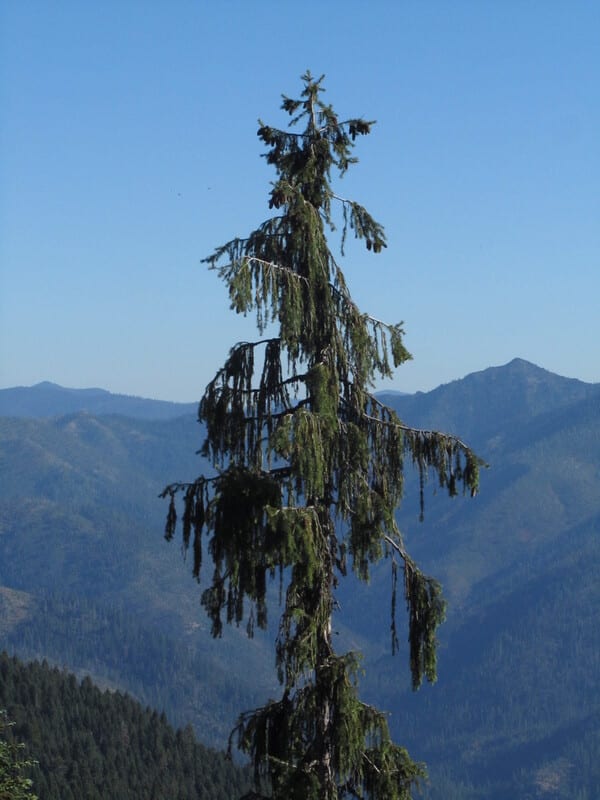
🌿 Morphology
🌞 Growing conditions
🌍 Origin and family
🌾 Uses
Warning: Despite the care taken in writing this sheet, it is essential to cross-reference sources before using or consuming any plant. When in doubt, consult a qualified professional
Permaculture uses
Brewer Spruce is primarily an ornamental tree, valued for its striking weeping habit. It doesn't have significant edible or medicinal uses in permaculture systems, but it can serve as a windbreak or visual screen, providing habitat for wildlife. Its needles can be used as mulch, slowly decomposing and adding acidity to the soil, benefiting acid-loving plants. The dense growth can also act as a soil stabilizer on slopes.
Permapeople description
A rare and ornamental spruce native to the Klamath Mountains of southwestern Oregon. It is known for its gracefully weeping branches and bluish-green needles.
Botanical description
Picea breweriana is a species of spruce native to the Klamath Mountains of southwest Oregon and northwest California. It is a medium-sized evergreen coniferous tree growing to 66-131 feet tall, exceptionally to 164 feet, with a trunk diameter of up to 4.9 feet. It is characterized by its pendulous branchlets, which create a distinctive weeping appearance. The leaves are needle-like, flattened, 0.6-1.2 inches long, glaucous blue-green above, and with two prominent white stomatal bands below. The cones are cylindrical, 3.1-4.7 inches long and 0.8-1 inch broad, maturing pale brown 5–7 months after pollination, and have smoothly rounded scales. It grows slowly, typically at high elevations in moist, well-drained soils.
Companion planting
Brewer Spruce generally does not have strong companion planting relationships. Consider its mature size and potential shading effect when planting near other plants. Avoid planting near plants that require alkaline soils, as the decomposing needles can acidify the soil. Plants that thrive in acidic, moist conditions, such as rhododendrons and azaleas, may be suitable companions.
Propagation methods
Brewer Spruce is typically propagated by seed. Seed germination can be challenging and requires stratification. Cuttings are difficult to root, and grafting is sometimes used to propagate specific cultivars or desirable traits. Micropropagation is also employed in commercial nurseries.
History and traditions
Picea breweriana was discovered in 1884 by William Brewer, a botanist, lending to its common name. It is relatively new to cultivation compared to other spruces. There are no significant traditional uses or historical importance documented for this species outside of ornamental horticulture.
Usage calendar
Optimal planting time is in spring or fall. Cones mature in late summer to early fall. Pruning, if needed, is best done in late winter or early spring before new growth begins. Flowering occurs in spring.
